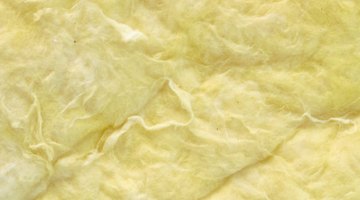How to Identify Rock Wool
Rock Wool, also known as mineral wool and stone wool, is a type of household insulation that was most popular during the 1950's to 1980's. It was used frequently in the insulation of exterior walls and in attics.

Rock wool insulation was first patented in 1875 and was historically widespread throughout all of the United States. Today it is used mainly in Washington, Texas, North Carolina and Indiana. In recent times, rock wool insulation has been gradually replaced by various other modern insulation products, such as fiberglass and ceramic fibers.
-
Check the color of your insulation sample. Rock wool is almost always pure white in color, but sometimes it can be tan or gray. Sometimes it has black spots on it.
-
Feel the texture of your sample. Rock wool insulation contains tiny balls of fabric, and a whole piece of it will look like a large mass of cotton balls.
-
Check the density of your sample. Rock wool is often applied to walls while still wet and thus contains very few pockets of air. Instead of being light and fluffy, it has a very solid, packed-together feel, like a dense kitchen sponge.
-
Weigh your insulation sample. Rock wool has a mass of about 1.2 pounds per cubic foot.
-
Verify your assessment by visiting a house that you know definitely contains rock wool insulation. See how your sample compares to the rock wool there. You can find rock wool insulation in the walls and attics of homes that were built in the 1980's and before.
References
Resources
Writer Bio
Walter Koh Jun Ren completed his B.A. in ancient history and classical studies in 2009. He specializes in anthropological, linguistic and religious history. He started his writing and editing career in 2005 with a series of Chinese history chapters for the China Symposium website and is currently working on his thesis involving the performance of sacred poetry in ancient times.
Photo Credits
- Hemera Technologies/AbleStock.com/Getty Images
- Hemera Technologies/AbleStock.com/Getty Images
More Articles



